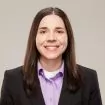Tuesday, September 4, 2018
Centrak, Inc. v. Sonitor Technologies, Inc., No. 17-2504, Courtroom 201
Centrak appeals from a District of Delaware decision granting summary judgment of non-infringement in favor of Sonitor on the grounds that Sonitor did not make “all claimed elements” of the claimed system. Centrak argues that the district court erred in holding that Sonitor did not “make” the accused system because some components are supplied or installed by others. Specifically, Centrak argues that under 35 U.S.C. § 271, the entity that adds the last claim limitations to create the operable assembly of the claimed invention is liable for direct infringement, even if it uses parts supplied or installed by others. Conversely, Sonitor argues that a party that makes only part of a claimed system does not “make” that system and thus cannot be liable for direct infringement. Sonitor further argues that the undisputed evidence shows that Sonitor does not “combine” the components that Centrak alleges satisfies the elements of the asserted claims.
Wednesday, September 5, 2018
Blackbird Tech LLC v. Lululemon Athletica, Inc., No. 17-2350, Courtroom 201
Blackbird appeals from a District of Delaware decision granting summary judgment of non-infringement under the doctrine of equivalents. In reaching its decision, the district court applied the disclosure dedication rule, which provides that “a patent drafter [who] discloses but declines to claim subject matter . . . dedicates that unclaimed subject matter to the public.” Johnson & Johnston, 285 F.3d 1046, 1054 (Fed. Cir. 2002). Blackbird contends that for the disclosure dedication rule to apply, the patentee must have disclosed the subject matter as an alternative to the claimed subject matter. Blackbird argues that in this case, the specification discloses that sewing is a subset of lamination, not an alternative, and thus the disclosure dedication rule does not apply. Lululemon argues that Blackbird’s disclosure-dedication argument is nothing more than a re-argument of its claim construction position, which the district court rejected. Lululemon further argues that one of ordinary skill in the art would understand that sewing plies of materials together is a substitute, not an alternative, to laminating those plies.
Asghari-Kamrani v. United Services Automobile Association, No. 18-1040, Courtroom 201
Asghari appeals from a PTAB decision determining that U.S. Patent No. 8,266,432 (“the ’432 patent”) is a covered business method (“CBM”) patent and subsequently holding that the claims were invalid under 35 U.S.C. §§ 102 and 103. The ’432 patent is directed to the idea of using a “central-entity,” such as a bank or credit card company, to provide “centralized identification and authentication of users and their transactions to increase security in e-commerce.”
Asghari argues that the PTAB’s determination conflicts with recent Federal Circuit precedent that narrowed the scope of patents eligible for CBM review to those that claim a “financial activity element.” United Services Automobile Association (“USAA”) argues that the patent at issue was eligible for CBM review, because finance and e-commerce play a central role in the claims. Additionally, Asghari argues that the PTO’s implementation regulation for the “technological invention” exception, is contrary to the statutory language of AIA § 18(d)(1). The PTO states that a “technological invention” is one in which “the claimed subject matter as a whole recites a technological feature that is novel and unobvious over the prior art.” Asghari contends that this definition is circular and improperly imports the novelty and nonobviousness standard into a jurisdictional test. USAA argues that the PTO’s definition for “technological invention” is reasonable and that further guidance is provided in the Office Patent Trial Practice Guide and by the legislative history of Congress’ mandate.
Asghari-Kamrani v. United Services Automobile Association, No. 17-2504, Courtroom 201
United Services Automobile Association (“USAA”) appeals from an Eastern District of Virginia’s decision denying USAA’s motion for attorney’s fees under 35 U.S.C. § 285. USAA argues that the district court’s denial was based entirely on the court’s belief that “the inexperience of counsel should not result in damage to those who hired him.” USAA argues that the court’s denial is inexplicable in light of the court’s statement that it had never seen a case like this before among the thousands it had presided over. Asghari counters that the district court’s informal remarks cannot establish that USAA’s conduct was “exceptional.” Asghari argues that the district court properly considered the totality of the circumstances, including USAA’s own litigation misconduct, and concluded that Asghari’s conduct was substantially justified.
D’Agostino v. MasterCard International Inc., No. 18-1000, Courtroom 203
This appeal arises from a PTAB decision invalidating the challenged claims of U.S. Patent Nos. 8,036,988 and 7,840,486. In December 2016, the Federal Circuit vacated and remanded the PTAB’s initial holding, which it said was based on an “unreasonable claim interpretation.” On remand, applying the Federal Circuit’s claim construction, the PTAB held that the challenged claims were invalid under 35 U.S.C. § 102. On appeal, D’Agostino argues that the PTAB lacked jurisdiction to entertain patentability arguments on remand. Specifically, D’Agostino argues that the IPR statute “does not permit Board action more than 18 months after institution.” Mastercard
argues that 35 U.S.C. §§ 6(b) and 316(c) grants the PTAB statutory authority to conduct IPR proceeding with no time restriction. Mastercard further contends that 35 U.S.C. §§ 144 and 316(a) grant the PTAB the authority to proceed on remand, and that 28 U.S.C. § 2016 grants the Federal Circuit the authority to remand any judgment for further proceedings.
The content of this article is intended to provide a general guide to the subject matter. Specialist advice should be sought about your specific circumstances.
